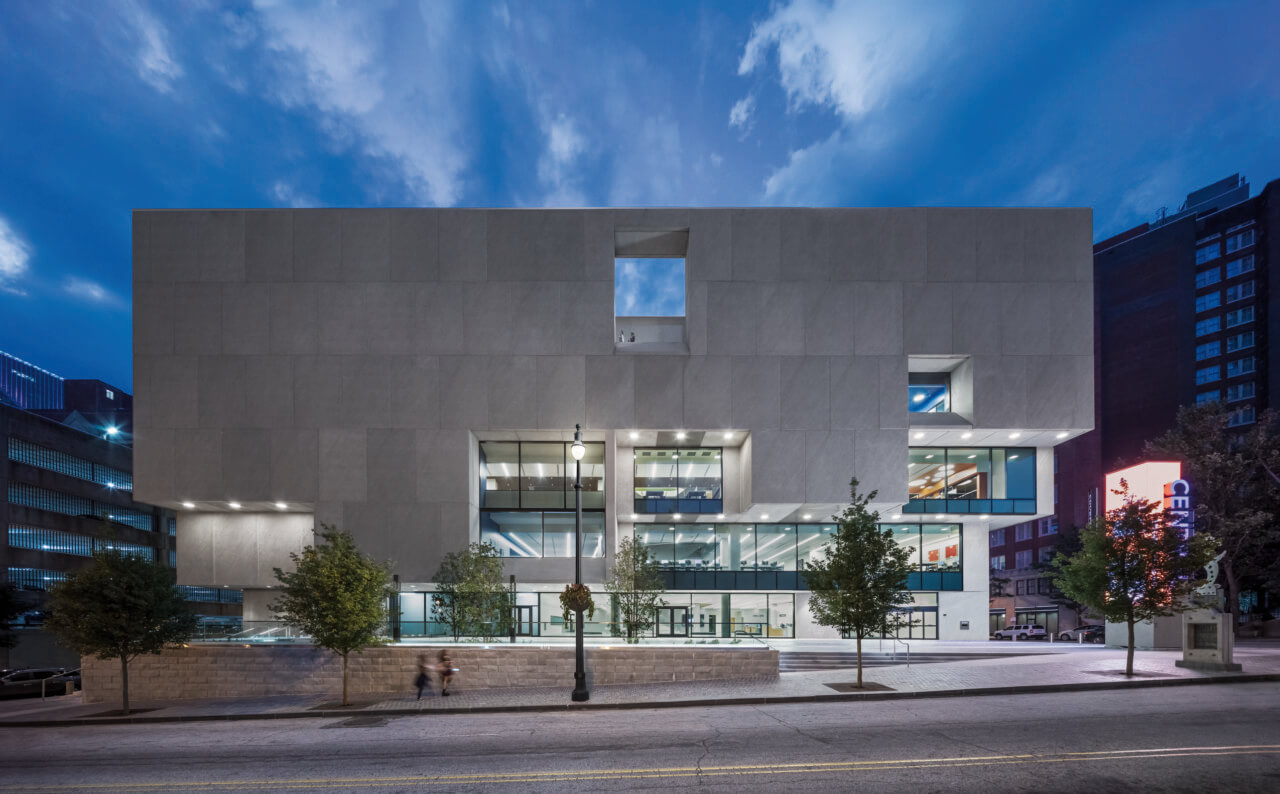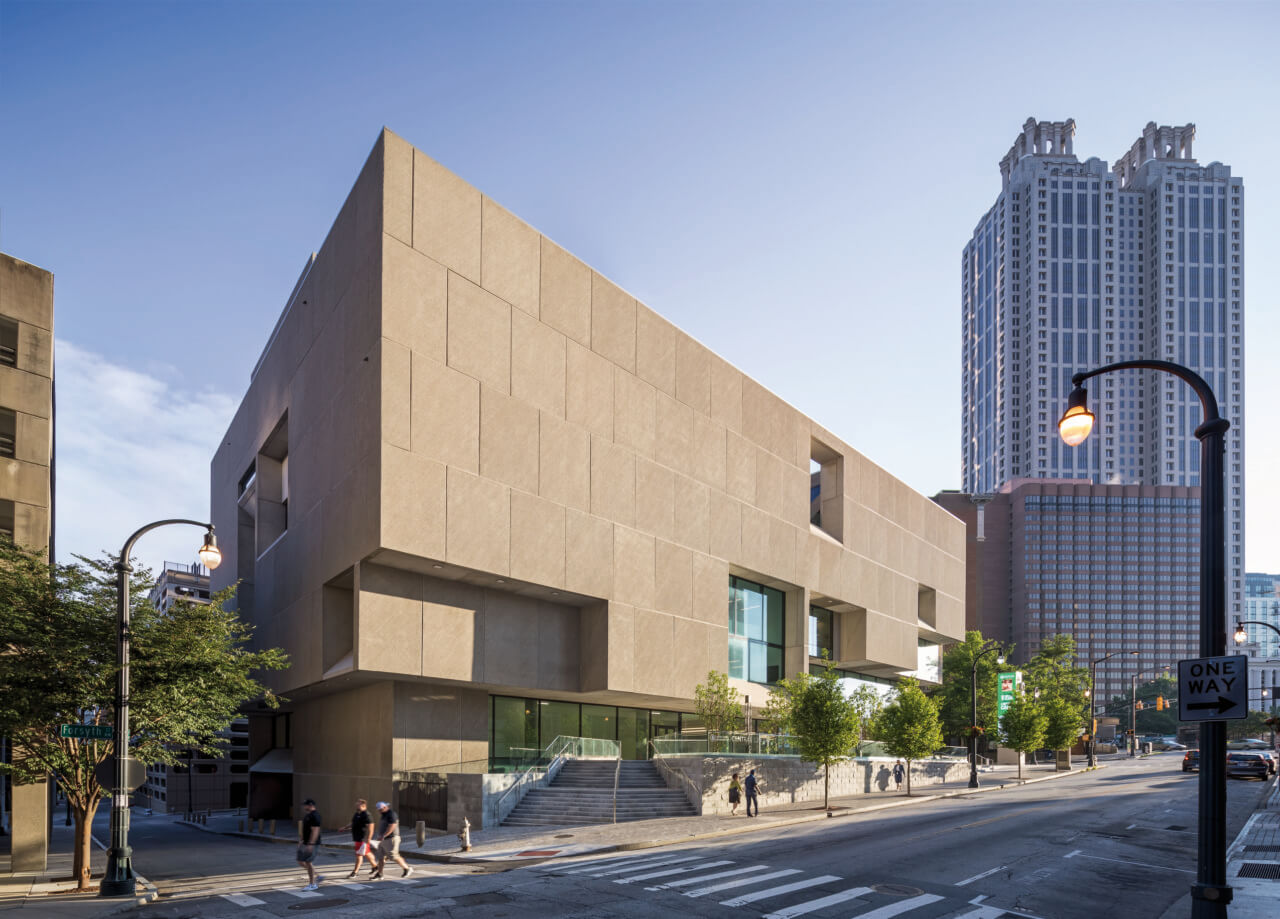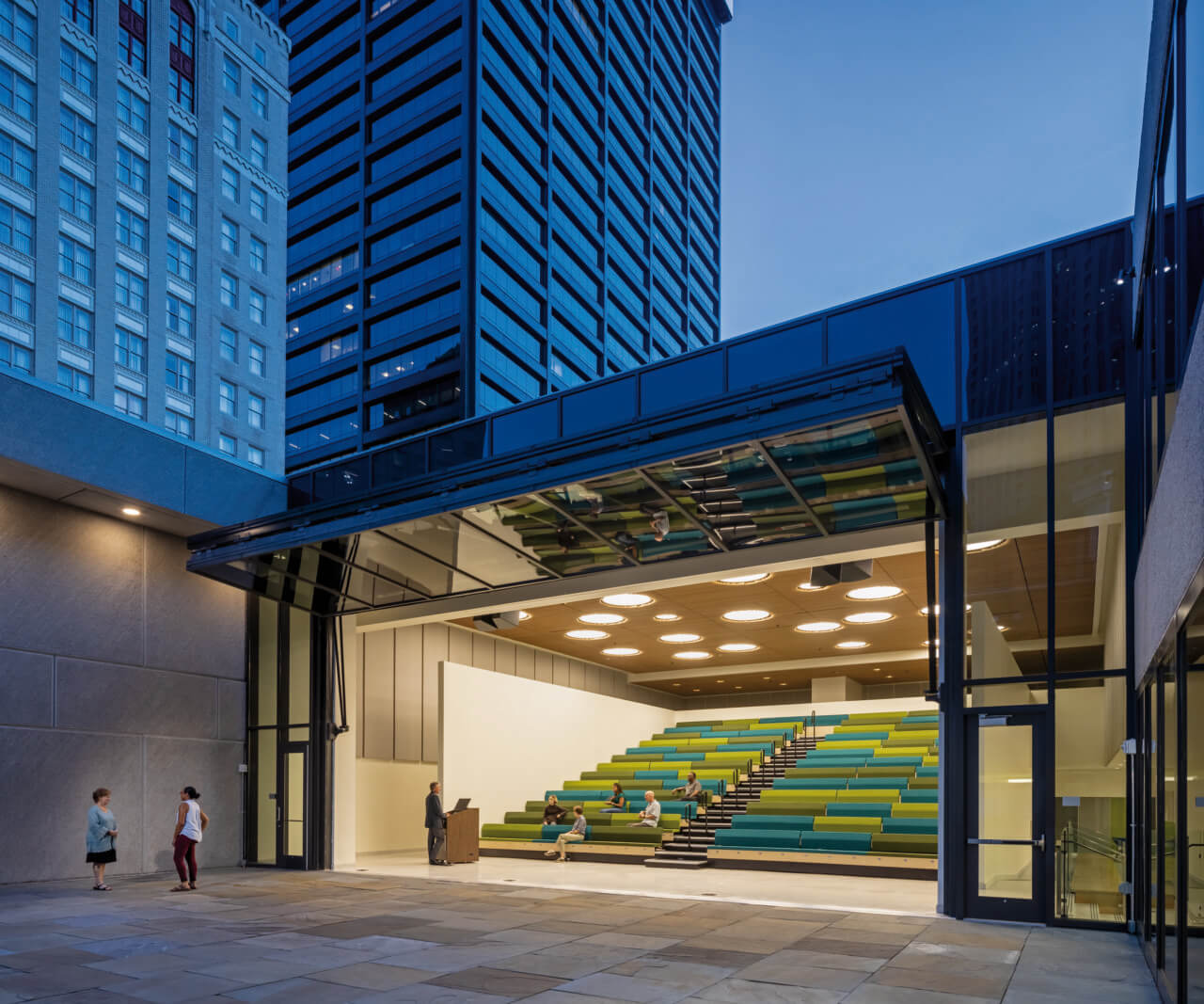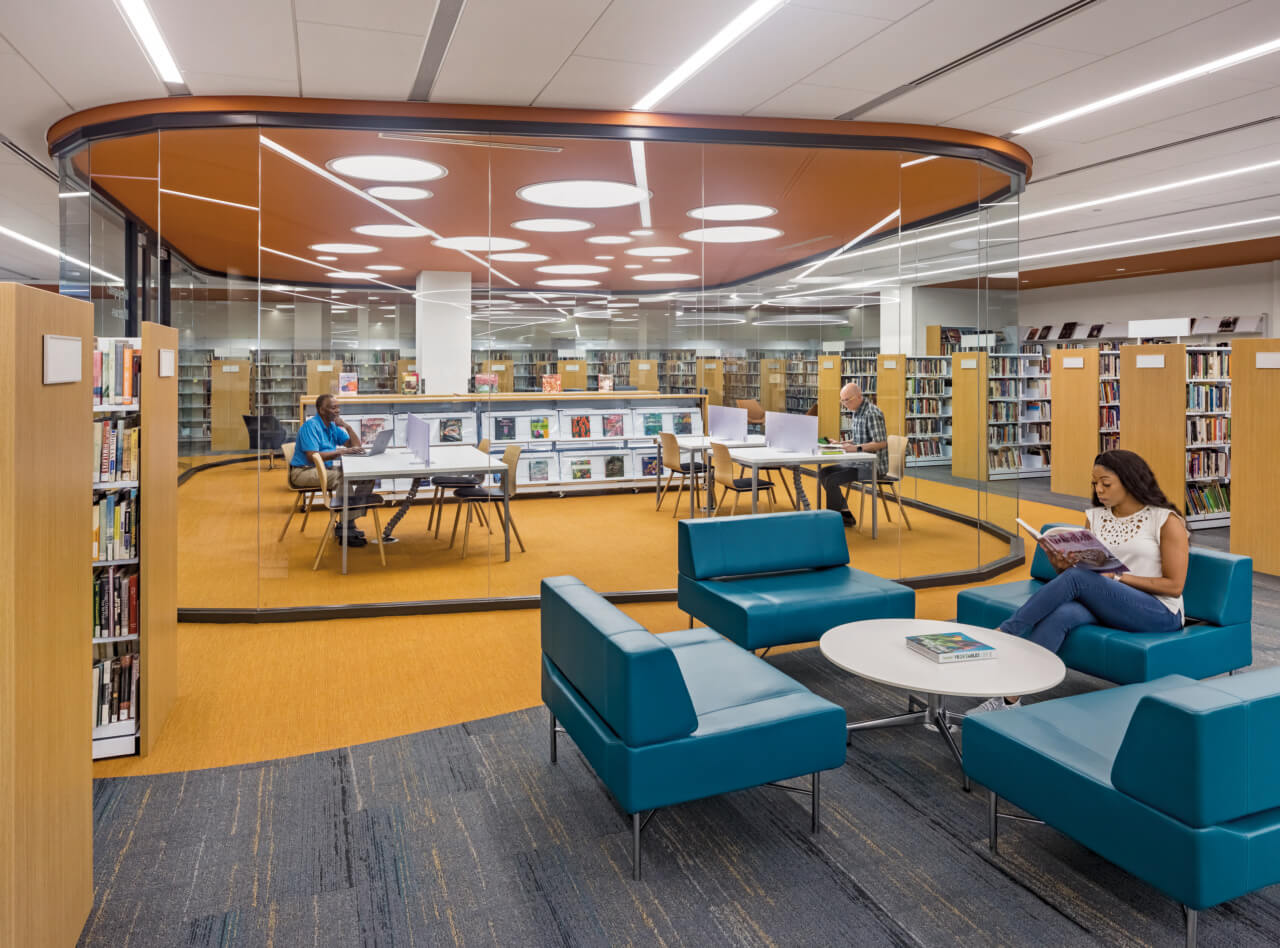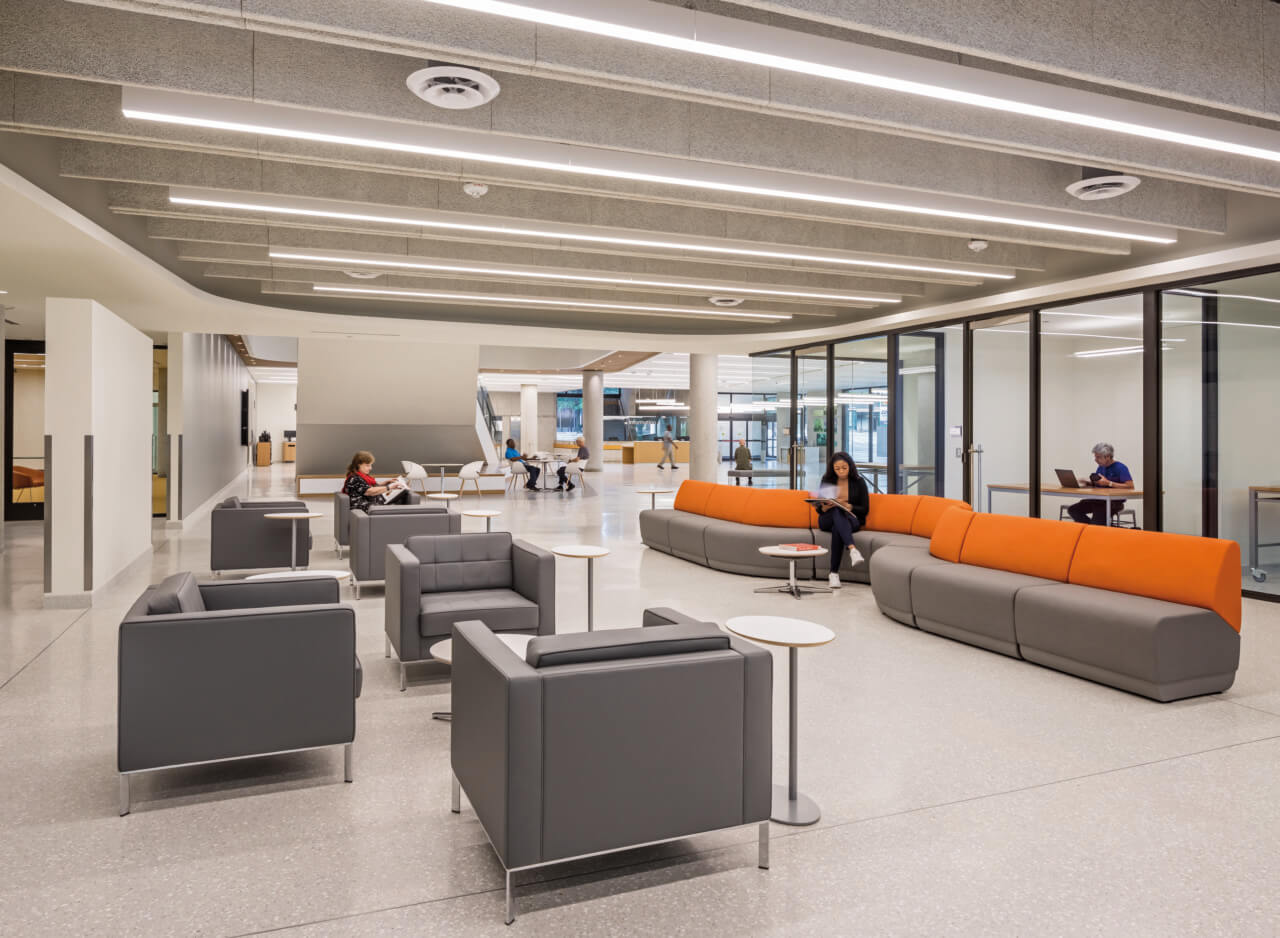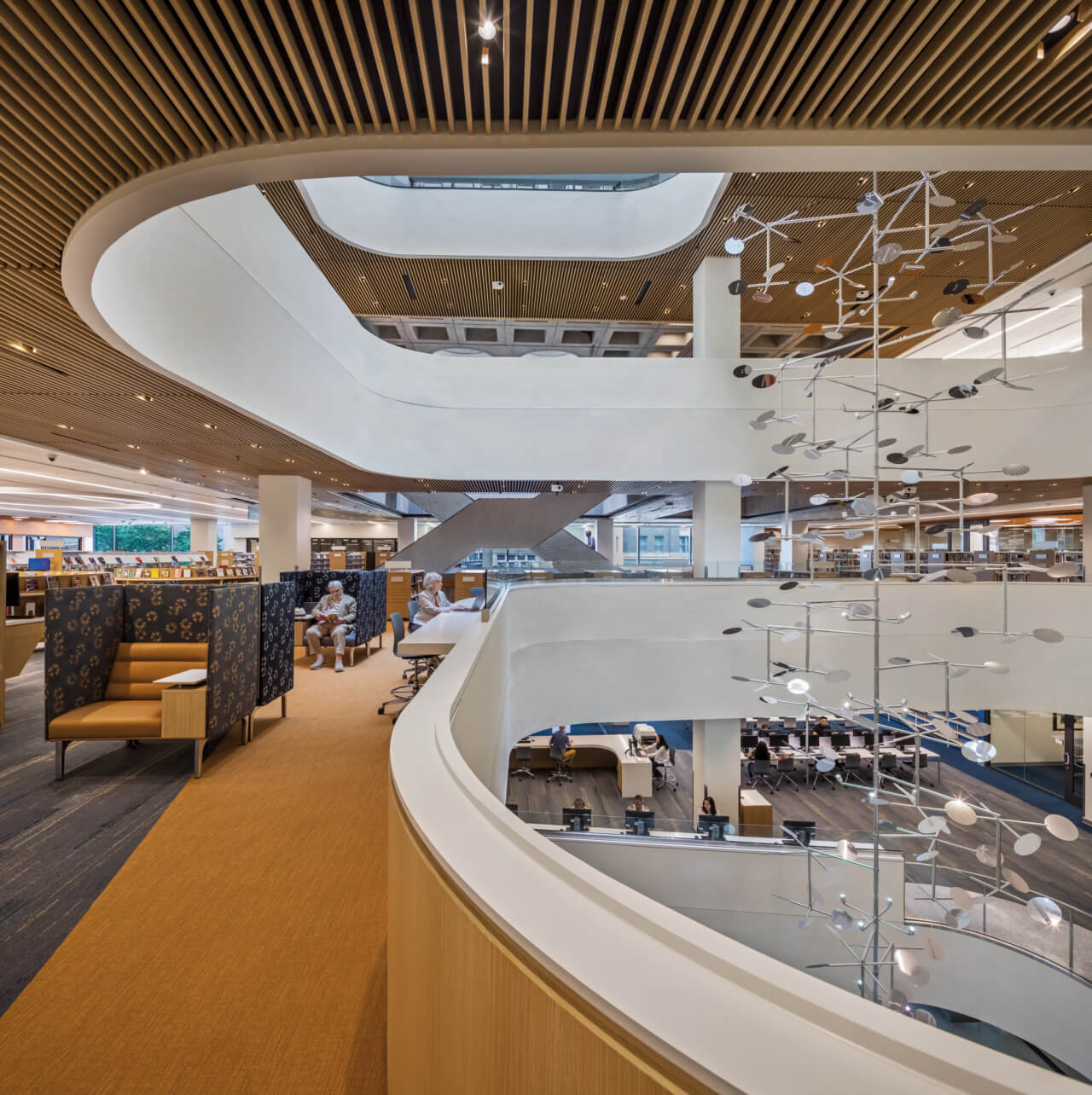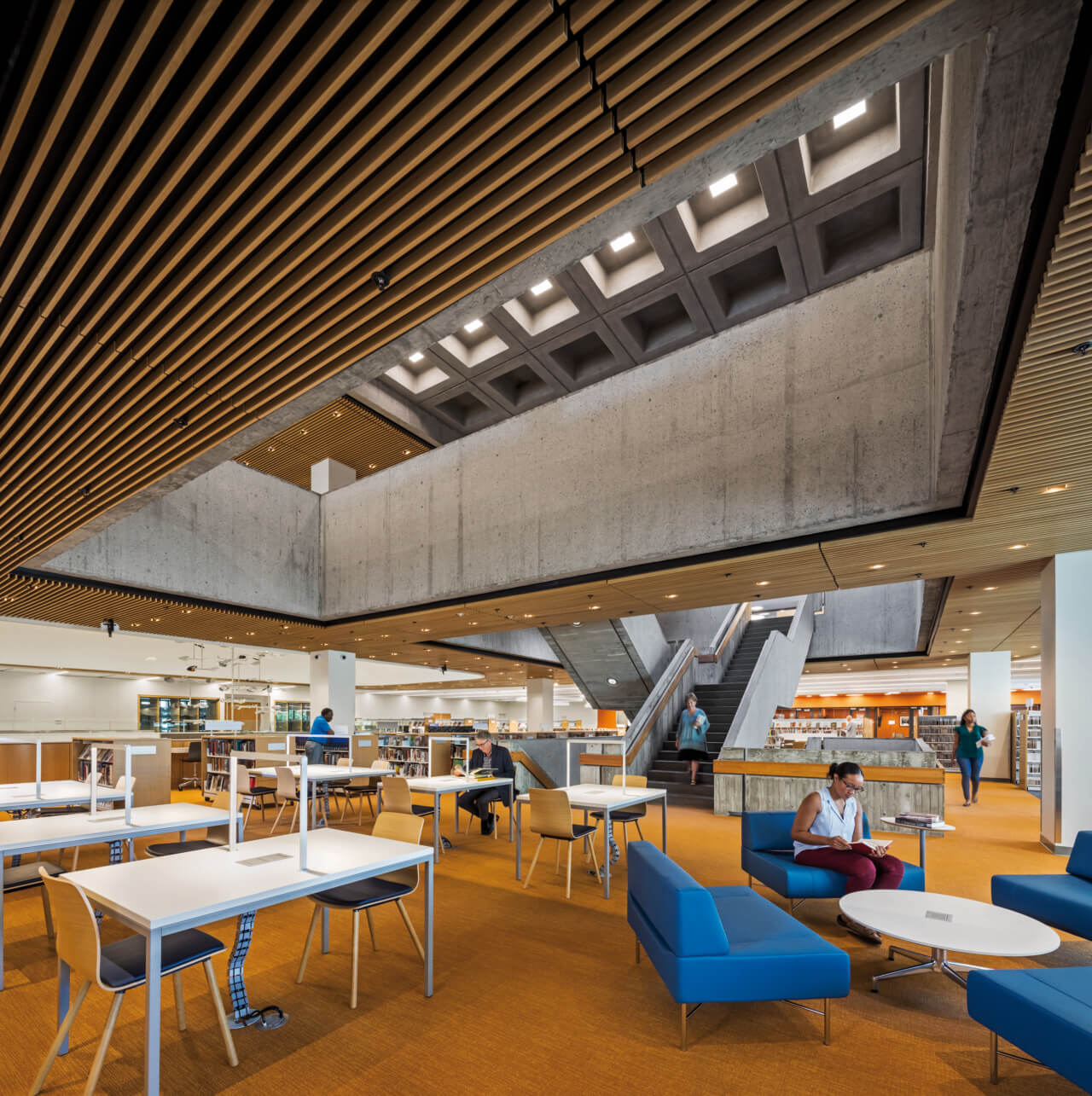Atlanta-headquartered multidisciplinary design firm Cooper Carry has shared final details of its much-anticipated modernization of Atlanta Central Library, a hulking Brutalist book repository overlooking Margaret Mitchell Square in Downtown Atlanta. The commanding 272,000 square-foot concrete monolith, proclaimed as “the standard bearer for cultural interests of Atlanta” by then-Mayor Maynard Jackson at its May 1980 opening, is the final completed work of Hungarian-born modernist architect and furniture designer Marcel Breuer, who died in New York one year after the library’s completion at the age of 79.
Cooper Carry first unveiled revised plans for an ambitious top-to-bottom rehabilitation of the building in 2018. Initially, city and county officials were in favor of razing the eight-story structure (an unyielding trend impacting Brutalist landmarks) and replacing it with a wholly new downtown central library branch. This led to uproar from preservationists in Atlanta and further afield who argued that the aging, inefficient, and notoriously dim building could be updated and saved. Fulton County commissioners were ultimately moved to vote in favor of the renovation in 2016. A design team of Cooper Carry in association with Raleigh, North Carolina-based Vines Architecture, architect of record Moody Nolan, and design-build contractor Winter Johnson Group were later brought on to create a brighter and more versatile Atlanta Central Library that meets the needs of contemporary library-goers while also respecting Breuer’s original design.
The library reopened to the public early last month after a three-year closure as the largest and most prominent Fulton County Library branch location to be refreshed under a $275 million system-wide suite of renovations and new construction.
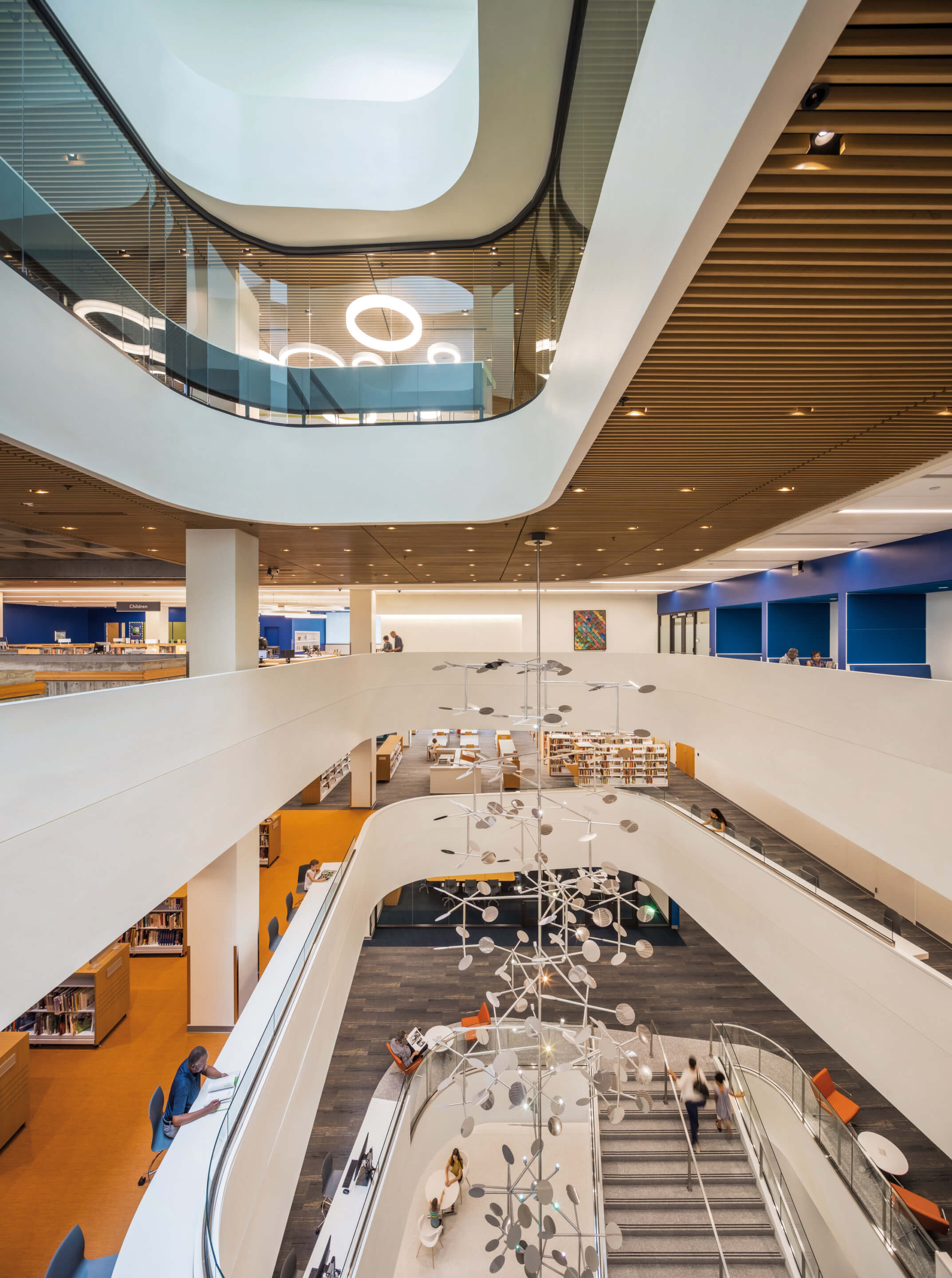
Before work on the redo commenced, Fulton County Library hosted a series of public engagement forums, including community listening sessions and business roundtables, seeking feedback as to how the library should evolve to better meet the needs of its patrons and how, in turn, the redesign could accommodate this. As detailed by Cooper Carry, a main theme that emerged from these sessions was that the revamped facility should, in addition to its traditional media-lending role, serve as a multifaceted community hub. More natural light and enhanced street-level features were also top priorities.
“Our relationship with libraries has evolved over time as the digital revolution has dramatically changed the information gathering process,” said Tim Fish, principal in Cooper Carry’s Higher Education Studio, in a statement. “What was once a place to flip open a book and browse the latest newspapers has now become a center for creativity and advanced technology, and, more importantly, a gathering spot for the community. Our renovation sought to embrace the unique aspects of the original design, while adding updates that make the library a more welcoming place for Atlantans and others to explore, learn and linger a while.”
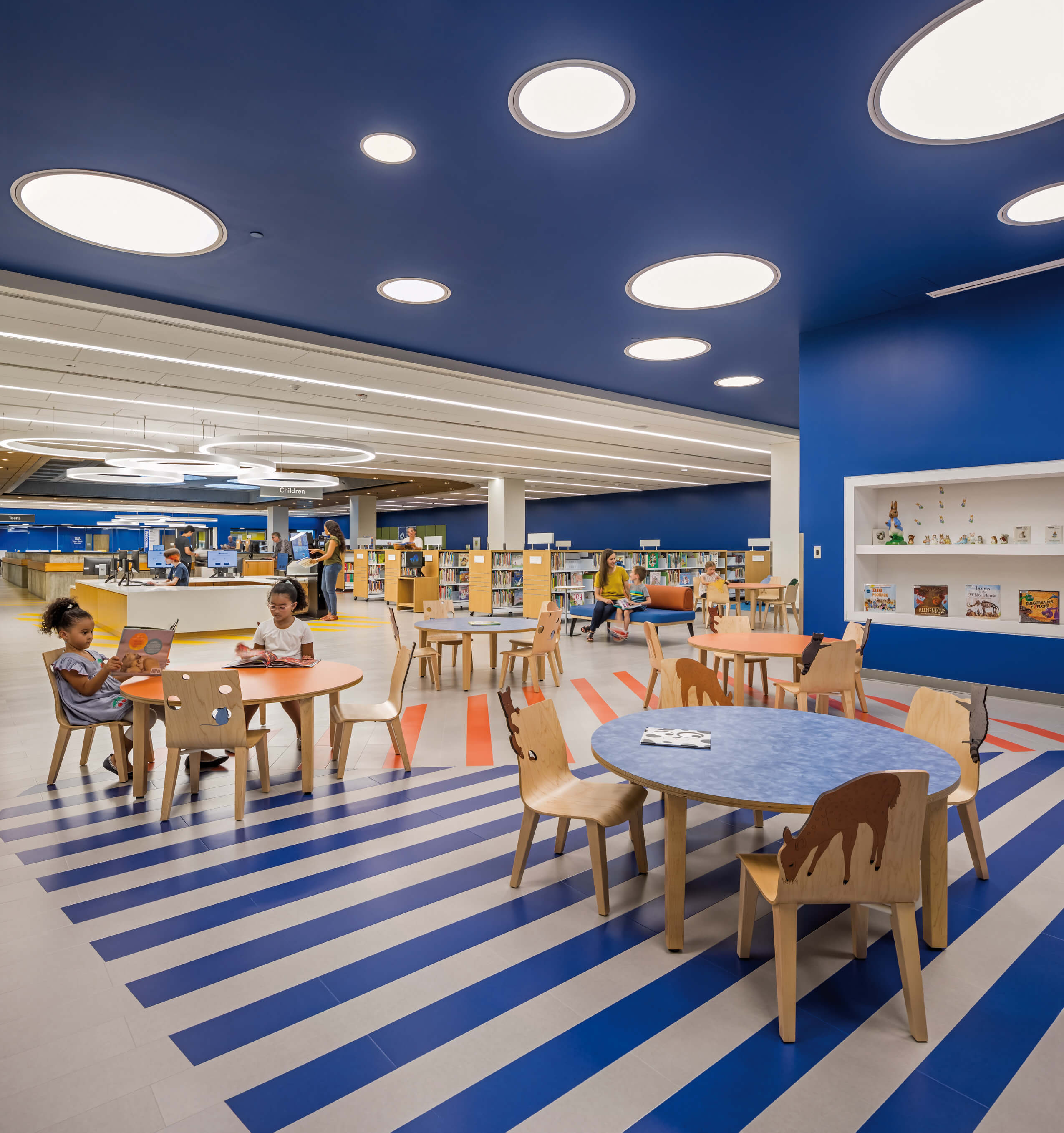
The addition of new windows (a facade-altering aspect that has been a major point of contention among architects and preservationists since plans were first revealed) was a significant element of the renovation and Atlanta-based Pattern r+d was enlisted to conduct a comprehensive daylight analysis to gauge the percentage of Spatial Daylight Autonomy (sDA) needed to increase natural light and control glare while “respecting the iconic form of the building.” As noted by the firm, the “constrained composition of windows in the original design caused the building to appear stark and uninviting to some, or a compelling sculpture of depth and shadow to others.”
“The lack of natural light was a major barrier in drawing people into the library, and several community members and employees of the library voiced the importance of this as part of the renovation,” elaborated Fish. “They valued access to attractive views of the Atlanta skyline and the bustling streetscape at a central pivot point of Downtown Atlanta’s Street grid. Strategically adding windows and a central skylight translated into a hugely positive environmental change inside the building.”
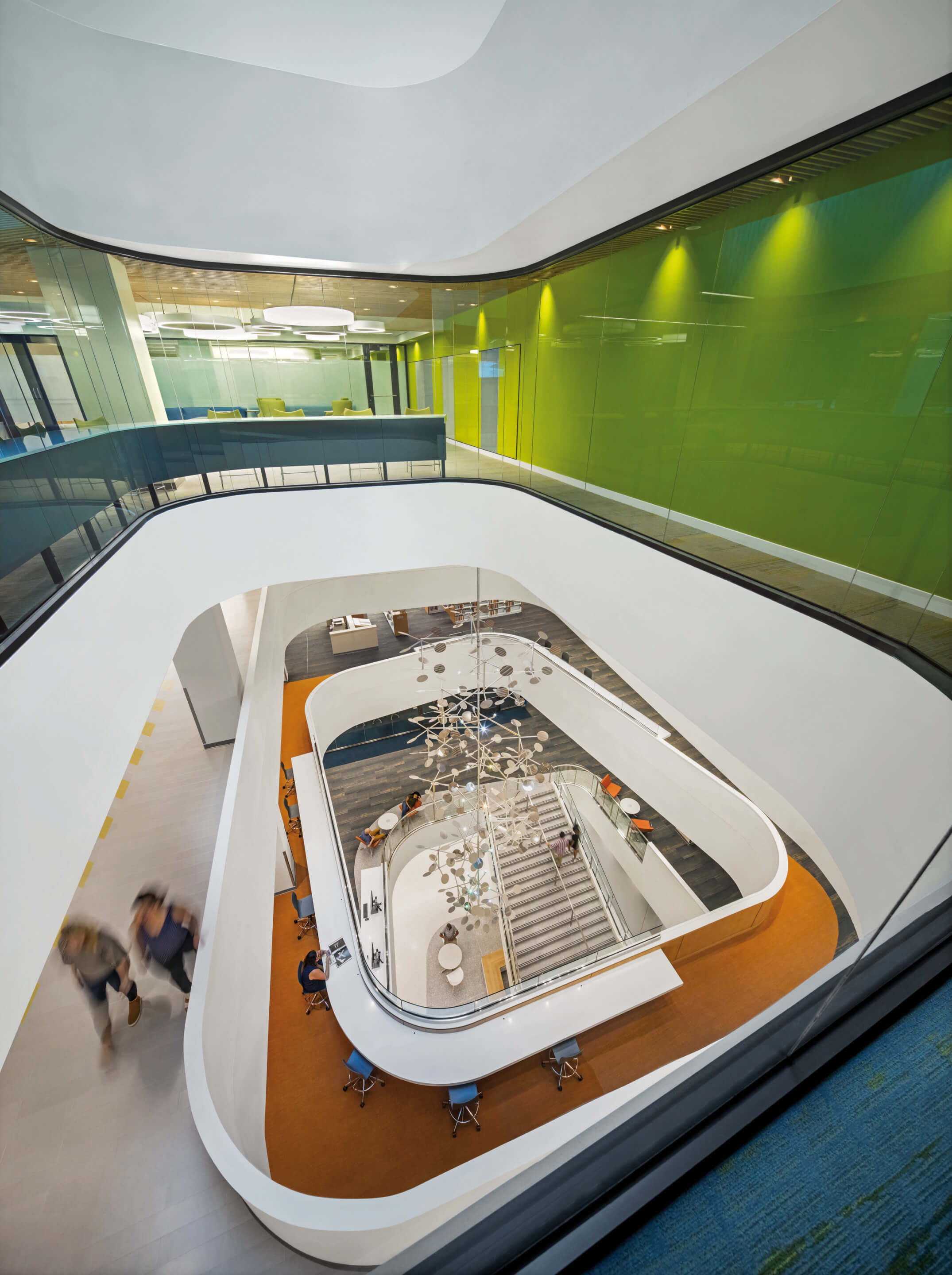
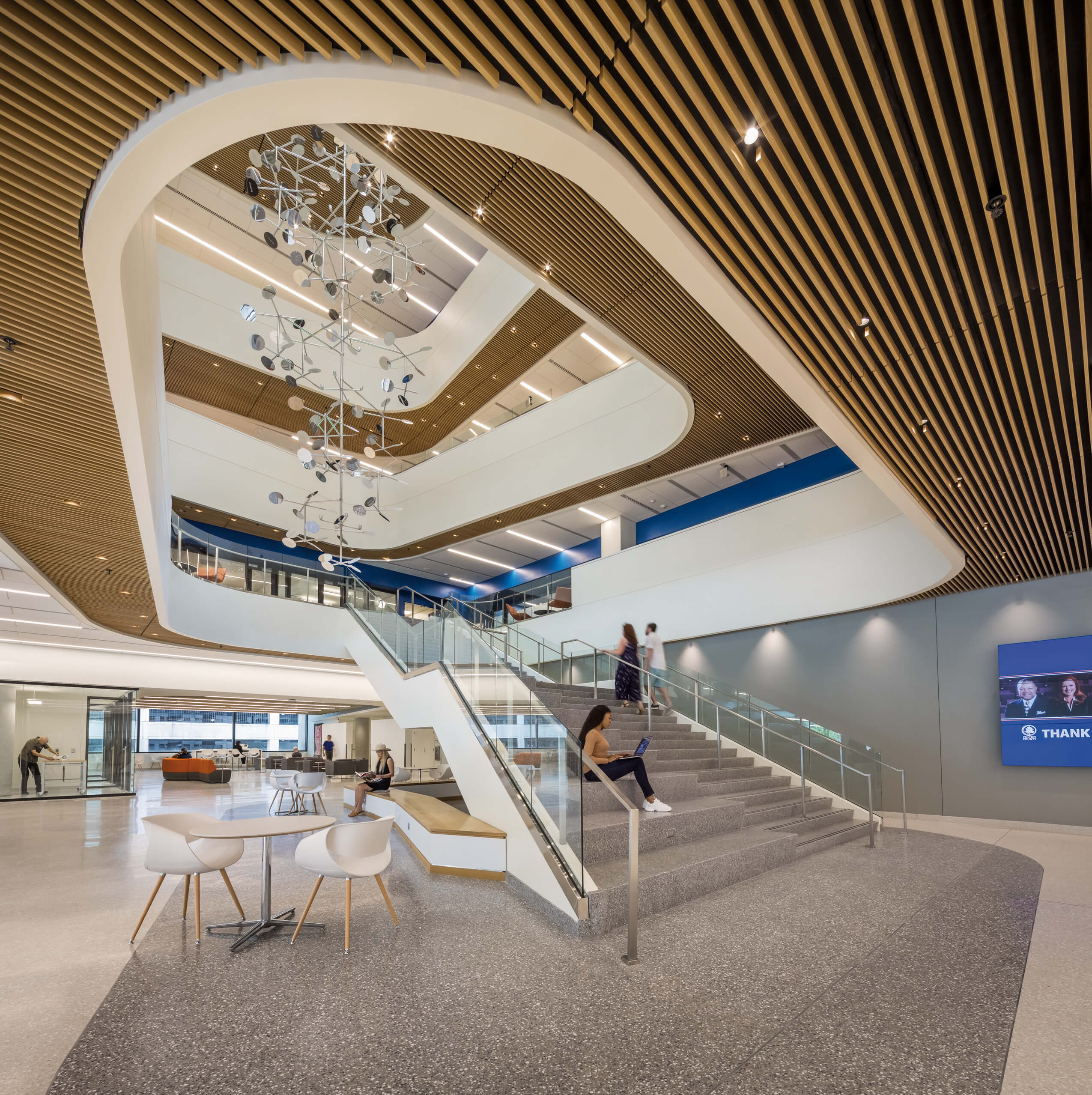
Prior to renovation work, the library was also cumbersome to navigate and many of Breuer’s signature design elements, including a grand sculptural staircase, were underutilized and “hidden in plain sight,” as the firm put it. To remedy this, a central service elevator was relocated, a move that further opened up the core of the building for improved patron circulation and enhanced natural light through the circular skylights of the building’s soaring new central atrium. As for Breuer’s staircase, it was restored and is now joined by a grand stairwell that more seamlessly connects to the library’s main entrance.
The library’s furnishings and meetings spaces were also subject to a total overhaul, overseen by Cooper Carry in collaboration with local interior design and planning firm Hillsman, Inc. Brightly hued and reconfigurable seating and surfaces now populate the library while entirely new spaces, including artist studios and maker spaces, have been introduced. Per the firm, “excess library space following the renovation is being allocated to future ventures, businesses and services that meet the needs of Fulton County and the community.”
The building’s fifth-floor terrace, previously underused and inaccessible to the public, has been transformed into an open-air social space where visitors are encouraged to congregate and linger. In the future, the terrace and an adjacent auditorium, directly accessible to the outdoors via a large glass operable door, could be used to host income-generating private events. Additionally, mechanical upgrades were executed throughout, new restrooms have been added, and the basement-level children’s section has been relocated to the fourth floor.
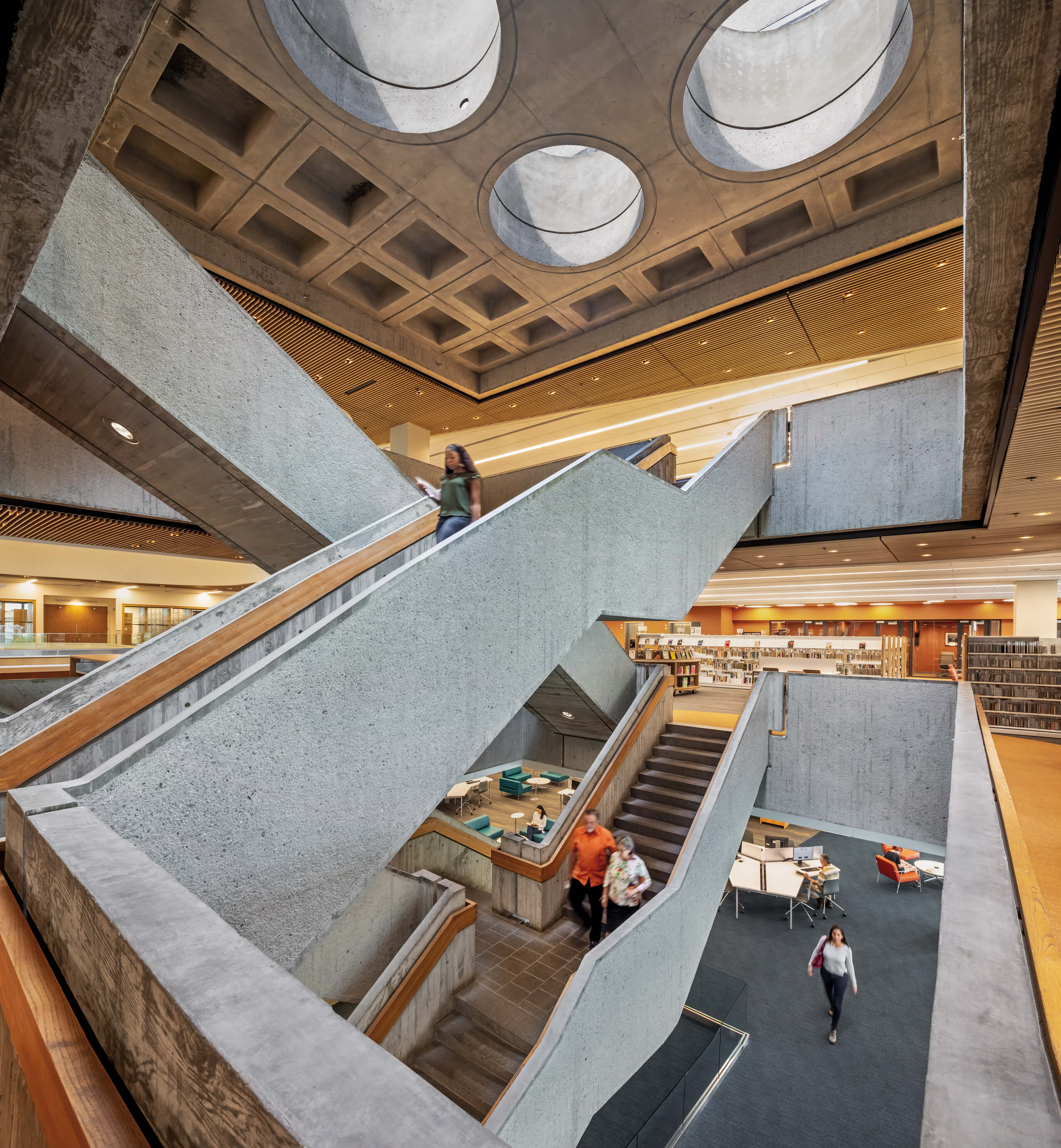
At the front door of Breuer’s Brutalist landmark, an exterior plaza will be overhauled to include enhanced lighting, digital displays promoting library goings-on, and social spaces that both draw people into the library and create a new and inviting space in the public realm.
“The library is placemaking at its best, a centralized third-space that invites people from all walks of life to come together and experience the joys of discovering something new,” said Christopher Bivins, associate principal in the Higher Education Studio at Cooper Carry. “When we set forth on this renovation, we knew that it would have greater implications than simply reconfiguring the exterior and interior. It has breathed new life into this critical community resource and the positive impact will be felt from this generation to the next.”
AN intends to publish a deeper, critical dive into this rehabilitated Breuer landmark—not the first in recent months—in the coming weeks.






